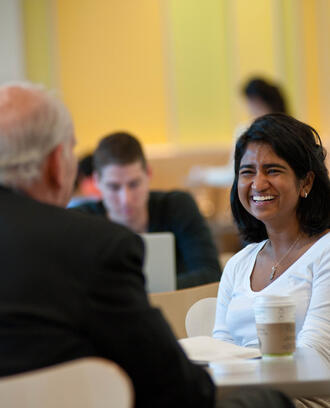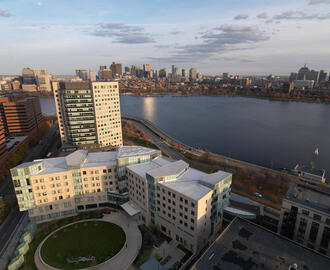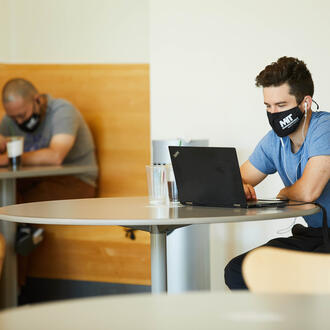MIT Sloan Fellows MBA Program
Operations Management
Building A Better Watercooler
By
MIT Sloan professor Thomas Malone is one of the world’s go-to experts on the way we work—and how we might work smarter. The founding director of the MIT Center for Collective Intelligence (CCI), Malone has written books—The Future of Work, for example, and Superminds—that have inspired more enlightened, inventive, and productive workplace policies. When the pandemic sent a majority of employees into a virtual environment, Malone pivoted to thinking about how remote working could be enhanced. One result of those musings is a new video chat interface called Minglr.A collaboration with MIT Sloan doctoral student Jaeyoon Song and Northeastern University Professor Chris Riedl, Minglr is designed to allow participants to spin off from larger meetings into one-on-one interactions. A participant in a large group Zoom might note a colleague working in an area of interest and reach out on Minglr so they can video chat when the larger meeting ends.
An intimate enhancement for Zoom
Malone’s team has published the Minglr tool as open source software for use primarily as a companion feature for Zoom, Google Meet, Skype, and other virtual meeting rooms. The current beta version of the tool has already been tested at several conferences. Early participants have been enthusiastic, the vast majority believing that Minglr would add a deeper layer to online meetings and allow people to follow up with one another fairly effortlessly. Malone test drove the prototype at a recent virtual conference and noted that he was able to have the same dynamic conversations he might have had in the lobby of an in-person conference in years past.
“Remote working is the biggest, most obvious change in the way we’ll be working from this point forward,” Malone says, “and it doesn’t have to be impersonal. I actually feel a real sense of social interaction on Zoom, but I’ve heard many people complaining about the loss of hallway and watercooler conversations. Minglr is one way to bring conversations like those back into our lives.”
It’s fitting that the collaboration among Malone and his Minglr collaborators has been entirely virtual. Malone has never actually met Jaeyoon Song, who lives in South Korea. Given the richness of their online partnership, however, he says it’s sometimes hard to remember that they have only worked together online.
Split-level ranch as office building?
Malone is enthusiastic about the inevitable shifts in the employer/employee contract. “It used to be that employers said, ‘I will provide you with suitable facilities for working in the office. Your duty is to be there.’ As a result of the move to remote working and the overall success of that enforced experiment, however, the contract between employer and employee is abruptly shifting. Now, it’s often more along the lines of ‘I expect you to accomplish certain goals. You decide where you need to be to accomplish those goals. As long as they’re met, we’re good.’”
In many cases, Malone notes that employers may be expected to provide equipment and tech support—even an allowance for office supplies such as printer cartridges and paper. And in the post-pandemic world, he foresees a new proliferation of neighborhood office buildings for those who are not comfortable working from their kitchen tables or want a change of scene. “When a vast majority of us are working remotely, we may see the occasional condo and suburban house converted into an office building—maybe one on every other block—so that many people have one within walking distance. It would be the natural evolution of the WeWork model and another opportunity for those highly-valued watercooler chats!”



